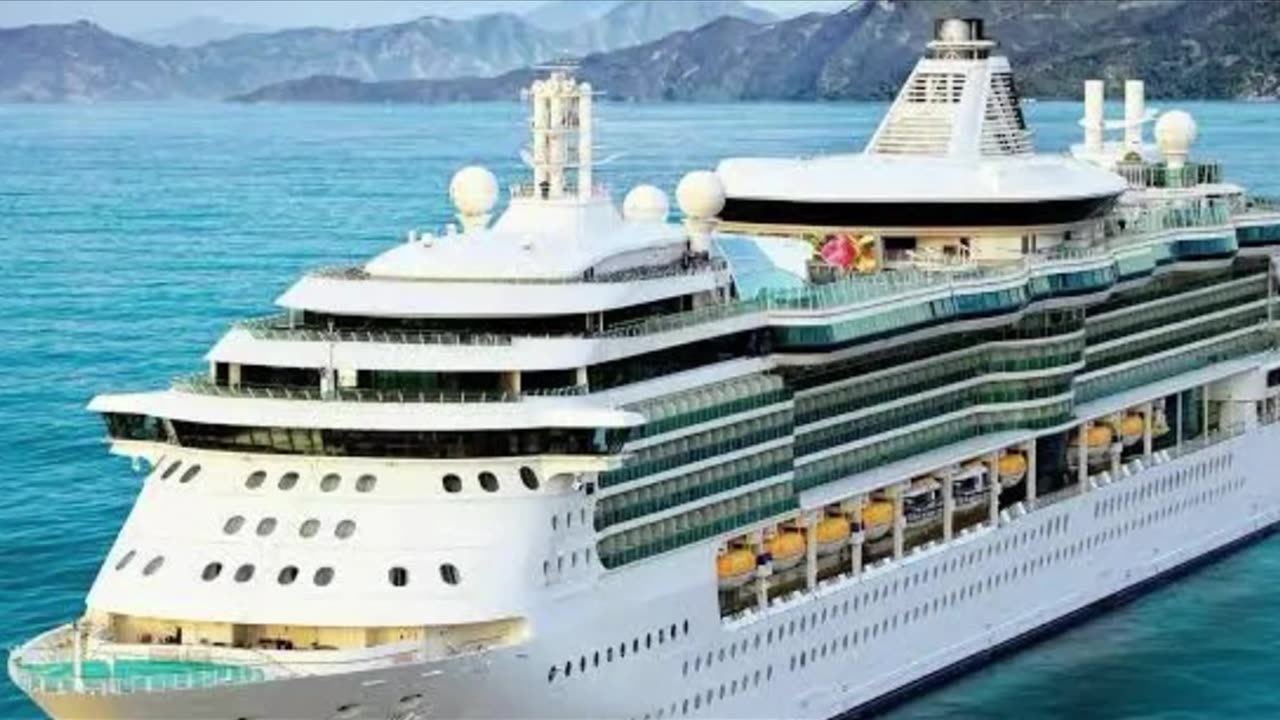Premium Only Content

History of Cruise Ships
A Voyage Through Time: The Illustrious History of Cruise Ships
Friends, colleagues, fellow adventurers,
Tonight, we embark on a fascinating journey, not across the boundless ocean, but through the annals of time, to explore the captivating history of cruise ships. From humble beginnings as utilitarian transport to the floating resorts of today, the evolution of these magnificent vessels mirrors the changing tides of human desire – from necessity to luxury, from mere passage to an immersive experience. This isn't just a story of steel and steam, but of ingenuity, ambition, and the enduring allure of the sea.
Our voyage begins not with leisure, but with migration. In the early 19th century, the concept of a dedicated "cruise" was virtually nonexistent. Ships were primarily for trade and, crucially, for transporting people across vast distances. The great age of transatlantic migration saw millions leave Europe for the Americas, driven by economic hardship and the promise of a new life. These early passenger ships, often converted cargo vessels, were far from luxurious. Conditions were spartan, often overcrowded, and the journey arduous. Think of the packet ships and later the early steamships – functional, essential, but certainly not designed for pleasure. The focus was on getting from point A to point B, as quickly and safely as possible.
However, even in these utilitarian days, a glimmer of the future began to emerge. Some enterprising ship owners recognized a nascent market for those who could afford a modicum of comfort. The British and North American Royal Mail Steam Packet Company, later Cunard Line, was founded in 1840, establishing a reputation for reliable, scheduled transatlantic crossings. While still primarily mail and passenger carriers, they began to offer improved amenities, setting the stage for a shift in perception.
The true genesis of the leisure cruise can be traced to the mid-19th century. In 1844, the Peninsular & Oriental Steam Navigation Company, or P&O as it became known, advertised "pleasure cruises" to destinations like Gibraltar and Malta. These were still nascent, often incorporating existing mail routes, but they marked a pivotal moment: the deliberate marketing of sea travel for enjoyment rather than solely for transport.
The turn of the 20th century witnessed a dramatic acceleration in the development of purpose-built passenger liners. This was the "Golden Age" of ocean travel. Companies like White Star Line, Cunard, and Hamburg-America Line competed fiercely, not just for speed, but for luxury. The rise of a wealthy industrial class fueled demand for opulent travel experiences. Ships like the Lusitania, Mauretania, and of course, the ill-fated Titanic, were not merely vessels; they were floating palaces, symbols of status and technological marvel. They boasted grand ballrooms, exquisite dining rooms, swimming pools, and private promenades, catering to every whim of their affluent passengers. Even steerage conditions improved, reflecting a growing awareness of passenger welfare.
World War I and II, however, brought this golden age to an abrupt halt. Many magnificent liners were pressed into service as troop transports, hospital ships, or even armed merchant cruisers. Their elegant interiors were stripped, their civilian roles temporarily suspended. The wars underscored the vital strategic importance of these vessels, but also highlighted their vulnerability.
The post-war era, particularly the 1950s and 60s, saw a brief resurgence in transatlantic liner travel, fueled by a booming global economy and the novelty of air travel still being in its infancy. Iconic ships like the Queen Mary and Queen Elizabeth continued to ply the Atlantic, carrying a mix of migrants, business travelers, and tourists.
But a new challenger was rapidly emerging: commercial aviation. The advent of affordable jet travel in the 1960s sounded the death knell for the traditional ocean liner's primary role as transatlantic transport. What once took days by sea could now be accomplished in hours by air. The liners faced an existential crisis.
And this is where the story truly shifts, where necessity became the mother of reinvention. The cruise industry, as we know it today, was born from this challenge. Instead of competing with airlines for point-to-point travel, the liners began to reposition themselves as destinations in themselves. The focus moved from transportation to the experience.
Companies like Norwegian Caribbean Line (now Norwegian Cruise Line), Carnival Cruise Line, and Royal Caribbean International began to emerge and innovate. They bought up older liners, refurbished them, and began offering shorter, more leisure-oriented voyages, primarily in the Caribbean. The emphasis was on fun, entertainment, and value. Gone were the formal dress codes of yesteryear; in came themed parties, abundant buffets, and a more relaxed atmosphere. The "fun ship" concept, pioneered by Carnival, revolutionized the industry, making cruises accessible to a broader demographic.
The late 20th and early 21st centuries have witnessed an explosion in the size, sophistication, and diversity of cruise ships. From the relatively modest vessels of the 1970s, we now have mega-ships that are veritable floating cities, carrying thousands of passengers and offering an astonishing array of amenities: multiple swimming pools, water parks, rock-climbing walls, ice-skating rinks, Broadway-style theaters, and a dizzying selection of dining options. Companies have embraced specialization, catering to niches from luxury small-ship expeditions to family-centric adventures, from river cruises to world voyages.
Sustainability has also emerged as a critical concern, with cruise lines investing in cleaner technologies and waste management systems to minimize their environmental footprint. The industry is constantly evolving, adapting to passenger preferences and global challenges.
So, as we reflect on this remarkable journey, from the rudimentary vessels of the 19th century to the technological marvels of today, we see a story of continuous transformation. The history of cruise ships is a testament to human ingenuity, our insatiable desire for exploration, and our enduring fascination with the open sea. It's a story that continues to unfold, promising new innovations and unforgettable experiences on the horizon. Thank you.
-
 LIVE
LIVE
SpartakusLIVE
2 hours ago#1 HERO of the PEOPLE || Ending the Week with FUN, WINS, and LAUGHS
173 watching -
 43:54
43:54
Donald Trump Jr.
1 hour agoJames and the Giant Breach, Plus Explosive J6 Revelations | TRIGGERED Ep.277
117K136 -
 LIVE
LIVE
MadHouse_
1 hour agoFRIEND FRIDAY! - Garys Mod ? im pretty sure im gonna lose at this game
68 watching -
 54:43
54:43
Glenn Greenwald
3 hours agoGlenn Reacts to Netanyahu's UN Speech; PLUS: Q&A on Trump's Russia/Ukraine Policy, the Tom Homan Investigation, and More | SYSTEM UPDATE #522
20.8K12 -
 LIVE
LIVE
blackfox87
58 minutes agoBorderlands Grind Continues | PREMIUM CREATOR | #DisabledVeteran
33 watching -
 LIVE
LIVE
Mally_Mouse
5 days agoFriend Friday!! 🎉 - Let's Play! - Gary's Mod!
47 watching -
 LIVE
LIVE
ZWOGs
7 hours ago🔴LIVE IN 1440p! - Resident Evil 3 First Playthrough, GMod w/ Mally_Mouse & Friends - Come Hang Out!
55 watching -
 1:00:55
1:00:55
BonginoReport
6 hours agoJames Comey Indicted! - Nightly Scroll w/ Hayley Caronia (Ep.143)
129K92 -
 1:20:26
1:20:26
Kim Iversen
4 hours agoThis Intel Analyst Has Accurately Predicted Putin's Every Move... Is War With NATO Next?
114K32 -
 LIVE
LIVE
GritsGG
11 hours agoQuad Win Streaks!🫡 Most Wins in WORLD! 3600+
81 watching